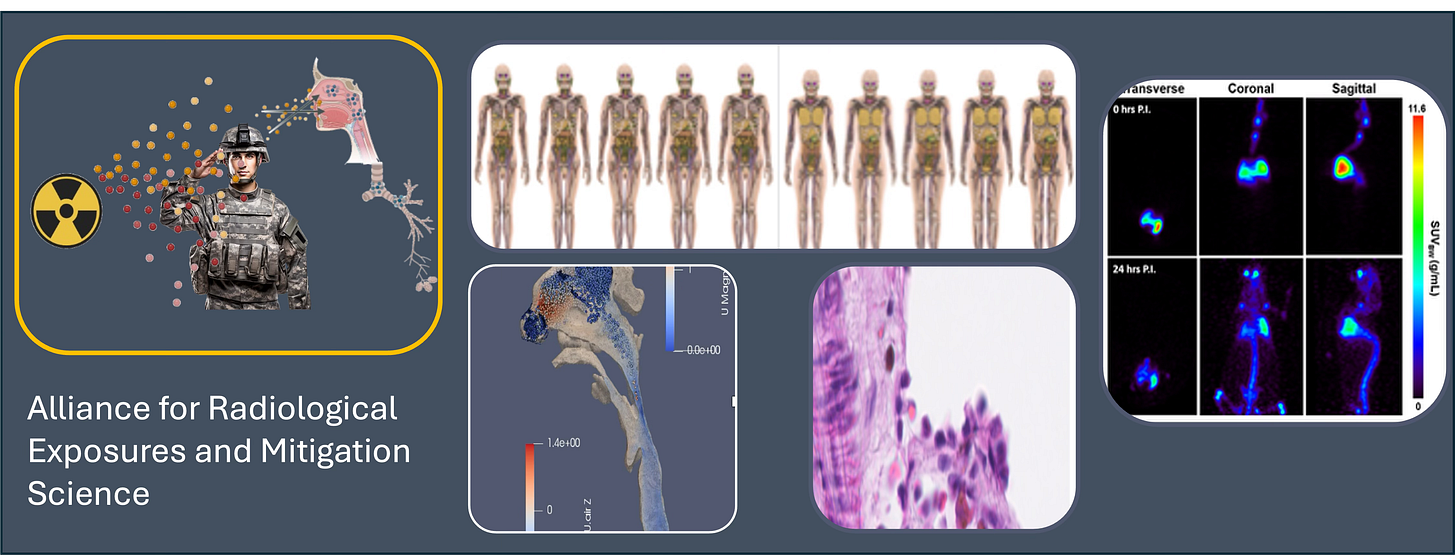Are We Protecting U.S. Troops from Radiological and Nuclear Threats Amid Rising Global Instability?
As geopolitical tensions rise on the eve of the Army’s 250th anniversary and nuclear infrastructure is threatened, federally-funded science to protect U.S. service personnel remains paused.
The Geopolitical Risk Is No Longer Hypothetical
On June 12, 2025, the White House confirmed that Israel carried out unilateral military strikes on Iran. In response, U.S. Secretary of State Marco Rubio stated publicly that the top priority is “protecting American forces in the region.”
This is not just a matter of military engagement—it carries radiological consequences that demand scientific readiness. The threat of radioactive material release, whether from reactor sabotage, deployment of dirty bombs, detonation of nuclear weapons, or use of munitions containing nuclear material, is escalating.
In the event of a radiological incident, inhalation will likely be the primary pathway of exposure, impacting both local civilian populations and deployed U.S. forces and support personnel.
A National Capability for Radiation Protection
The Alliance for Radiological Exposures and Mitigation Science (AllREMS), established in 2021, was created to address this very risk. Led by Northwestern University, and supported by key partners at Georgia Tech, University of Florida, UC Berkeley, UCLA, Oak Ridge National Laboratory (ORNL), and Oak Ridge Associated Universities (ORAU), AllREMS advances scientific countermeasures for inhaled radionuclides and toxic metals—the exposures most relevant in nuclear conflict, sabotage, or terrorism scenarios.
The AllREMS team has been developing:
Sustained-release decorporation therapeutics for field and emergency, designed to remove internal contaminants;
Predictive biokinetic models for inhaled radiation to inform medical countermeasures;
High-resolution dosimetry and imaging to track contaminant migration and enable targeted therapies;
Biomarker-aligned treatment strategies for both acute and long-term injury; and
AI-integrated modeling frameworks to rapidly assess exposure and support decision-making in complex operational environments.
This is the only federally funded effort in the U.S. focused on the full modeling and mitigation pipeline for inhalation-based internal radioactive contamination.

Why This Work Matters Now
As the conflict in Eastern Europe continues and Zaporizhzhia’s nuclear plant remains vulnerable, and with Israeli strikes on Iranian nuclear facilities reigniting regional instability, U.S. personnel may be the first exposed in any scenario involving radiological release.
This week also marks the 250th anniversary of the United States Army, an occasion meant to honor the service and protection of American forces worldwide. Ensuring those personnel are protected against radiological threats is more than symbolic. It is operationally necessary.
This is not a long-term theoretical hazard. It is a short-term operational one. The people tasked with maintaining peace and responding to conflict need the capabilities that AllREMS is building.
Research Remains Ready
As scientists, AllREMS stands prepared alongside our armed forces, while not in uniform, but with the data, models, and technologies needed to stay protected in environments where radiological threats are real.
The science is ready. The systems are in place. The relevance could not be clearer.
In a time when radiological exposure is not just plausible but geopolitically probable, halting America’s only integrated research program in inhalation dosimetry and mitigation science is not a matter of bureaucracy—it is a matter of preparedness.
Holding the Line: A Pause in Readiness Research
In early April 2025, a Stop Work Order was issued without explanation to the prime institution to pause all work the AllREMS projects. This pause, unrelated to scientific performance or any misalignment with Administration priorities, and with no explicit explanation, interrupted active research efforts and disrupted collaboration across AllREMS.
A separate NIH-funded project focused on civilian radiological exposure was similarly paused. At present, none of the AllREMS partner institutions are permitted to utilize federal funds for work on internal radiological contamination, bringing the work to a standstill. And now more than ever our troops need this research and technology to ensure battlefield readiness and safety amidst escalating geopolitical conflicts involving nuclear targets.
The views expressed in this post are those of the author and do not represent the official position or endorsement of any affiliated institutions,. This content is intended solely for informational and academic communication purposes.



